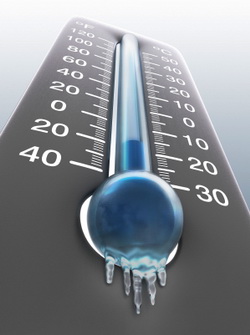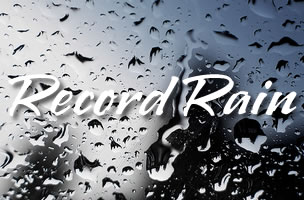
Wednesday marked the first day of fall and while the forecast may not call for freezing temperatures or snow, it won’t be long before the Mile High City is faced with those conditions. We have in fact already passed the earliest dates Denver has seen freezes and snow so they can arrive at any time.
Denver has in fact seen snow as early as September 3rd and its first seasonal freeze as early as September 8th. Those are the extremes however. On average the first snowfall occurs on October 19th and the first freeze on October 7th.
How will we fare this year? La Niña conditions are strengthening and the outlook is for warmer than normal temperatures for the next few months. Colorado weather however doesn’t always follow an established pattern.
Below is a look at Colorado’s cold season statistics as provided by the National Weather Service. They provide a bit of historical perspective as to what we might expect this year.
- The statistics below and many more are kept in our Climatology section. Check it out
Autumn First Freeze Information
October 2, 2009
October 13, 2008
October 8, 2007
September 18, 2006
October 5, 2005
October 14, 2004
September 14, 2003
October 4, 2002
October 5, 2001
September 20, 2000
September 28, 1999
Earliest Date of First Snow: September 3, 1961
October 21, 2009
November 14, 2008
October 22, 2007
October 18, 2006
October 10, 2005
November 1, 2004
November 5, 2003
October 25, 2002
October 5, 2001
September 23, 2000
September 28, 1999
Greatest Seasonal Snowfall: 118.7 inches 1908-09
60.6 inches 2009-2010
38.1 inches 2008-2009
46.3 inches 2007-2008
72.6 inches 2006-2007
30.4 inches 2005-2006
39.3 inches 2004-2005
38.0 inches 2003-2004
61.8 inches 2002-2003
30.2 inches 2001-2002
58.3 inches 2000-2001
45.6 inches 1999-2000
Denver’s Snowstorm Total Snowfall Statistics
30.4 inches Nov 3, 1946
23.8 inches Dec 24, 1982
21.9 inches Oct 25, 1997
21.5 inches Nov 27, 1983
21.2 inches Nov 19, 1991
20.7 inches Dec 20, 2006
18.7 inches Mar 5, 1983
17.7 inches Nov 19, 1979
17.3 inches Apr 1, 1957
16.9 inches Mar 20, 1952
16.0 inches Oct 3, 1969
15.8 inches Apr 26, 1972


 As temperatures start to drop, September reminds us that summer is at an end and fall is now here. Sunshine is predominant though as the month actually has the highest percentage of sun out of any month. Sunny days and clear, cool nights are the standard weather pattern for the month.
As temperatures start to drop, September reminds us that summer is at an end and fall is now here. Sunshine is predominant though as the month actually has the highest percentage of sun out of any month. Sunny days and clear, cool nights are the standard weather pattern for the month.






